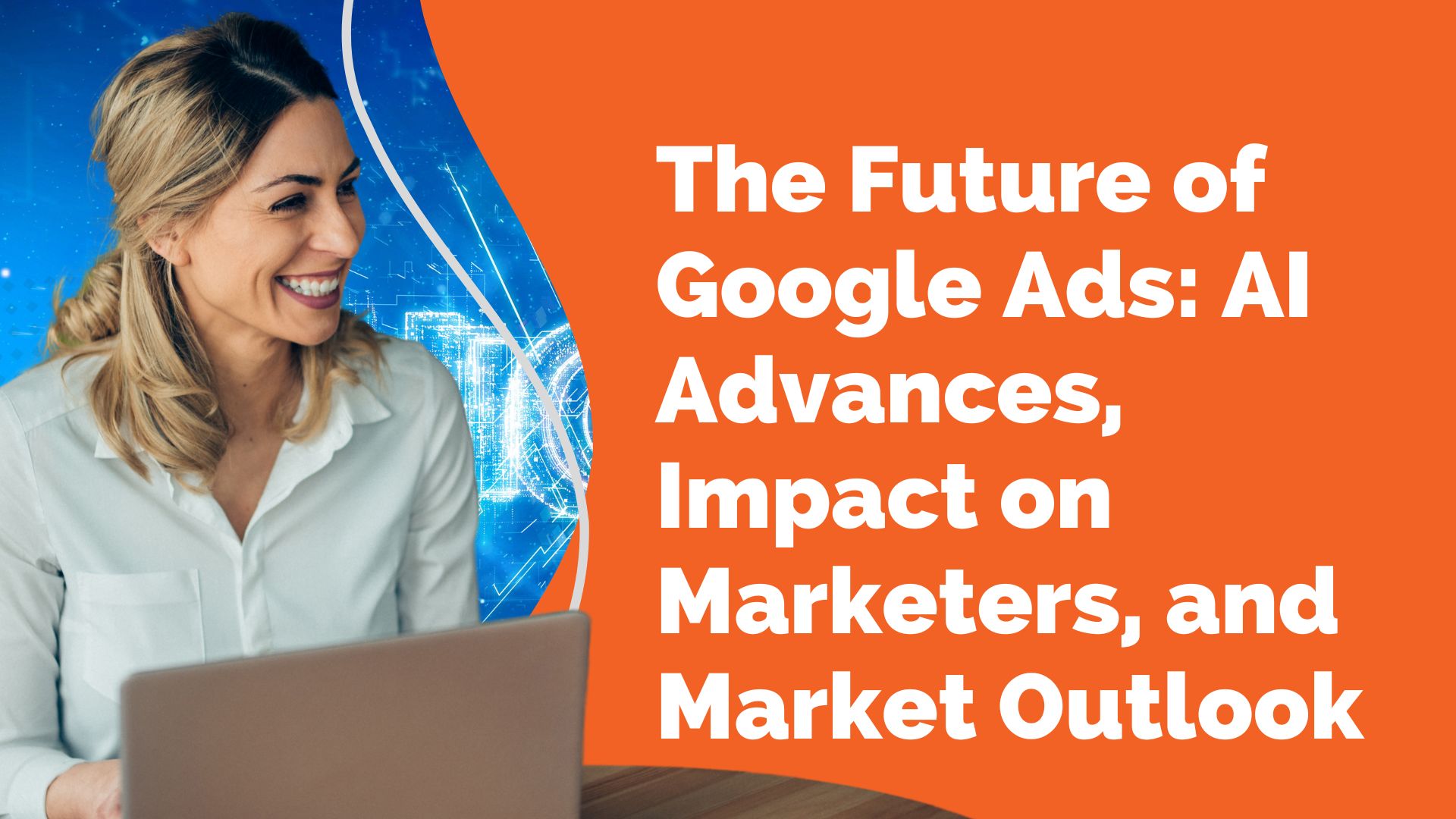For SaaS and software companies, establishing a strong online presence is no longer optional—it’s a necessity. In an increasingly digital world, standing out from the competition and effectively reaching your target audience is crucial. Google Ads provides an unparalleled opportunity to enhance your visibility, drive targeted traffic, and generate high-quality leads.
In this article, we will dive deep into the most effective Google Ads strategies for SaaS and software businesses, showing you how to optimize your campaigns, boost ROI, and outpace your competition. Whether you’re looking to scale faster or refine your current advertising efforts, these insights will provide the roadmap to success.
Why Google Ads is Essential for Software Companies
In today’s highly competitive digital landscape, Google Ads has become one of the most important and effective marketing tools for software companies. It provides a fast and efficient way to reach potential customers actively searching for your products or services. By allowing you to target specific keywords, locations, and interests, Google Ads ensures your ads are seen by the right audience at the right time.
But Google Ads is more than just a visibility tool; it offers powerful analytics and tracking features that enable you to monitor and optimize your campaigns. This means you can constantly improve your ads to better connect with your audience and maximize your ROI. You’ll gain insights into what’s working and what’s not, allowing for precise adjustments that make your advertising more efficient and cost-effective.
Versatility of Google Ads Formats
One of the major advantages of Google Ads is its flexibility in ad formats. Whether through text ads, display ads, shopping ads, or video ads, you can reach your audience in multiple ways. For instance:
- Text Ads: Great for capturing users with high purchase intent through keyword searches.
- Display Ads: Ideal for building brand awareness by placing your ads on relevant websites within Google’s Display Network.
- Shopping Ads: Perfect for e-commerce companies looking to showcase products directly in search results.
- Video Ads: A highly engaging format for boosting brand recognition and delivering compelling visual content.
This variety allows you to craft a comprehensive, multi-faceted advertising approach, ensuring you meet potential customers wherever they are in their buying journey.
Flexibility and Control Over Campaigns
Google Ads also provides unparalleled flexibility when managing and optimizing campaigns. You can make real-time adjustments to your budget, targeting options, and even individual ad elements. This ensures you’re always in control of your spending and can pivot quickly to capitalize on emerging trends or new audience behaviors. Additionally, A/B testing various ad creatives or targeting approaches helps you identify the best-performing versions and continuously improve your results.
Another powerful feature is **ad extensions**, which allow you to add extra information to your ads, such as phone numbers, location details, or direct links to different sections of your website. These extensions increase the relevance and visibility of your ads, making it easier for customers to connect with your business.
Unmatched Reach and Global Scale
Google’s reach is unmatched. As the most popular search engine globally, it’s used by millions of people every day. By leveraging Google Ads, software companies can extend their reach beyond local markets and tap into global opportunities. This is particularly important for SaaS companies, where products and services are often designed for a worldwide customer base.
Being able to target international audiences with precision helps you scale your business more effectively. By tailoring campaigns to different regions and demographics, you can ensure that your message resonates with specific markets, driving higher engagement and conversions.
The Role of Landing Pages in Google Ads Success
A crucial element in the success of Google Ads campaigns is the landing page experience. Once a user clicks on your ad, they should be directed to a dedicated landing page that aligns with the ad’s messaging and offers clear calls-to-action. The design and content of this page can significantly impact your conversion rate, making it essential to invest in optimized, high-performing landing pages.
Monitoring and Analytics for Continuous Improvement
The key to a successful Google Ads campaign lies in continuous monitoring and optimization. Google Ads offers a range of metrics—such as click-through rate (CTR), conversion rate, and cost per acquisition (CPA)—to help you track the performance of your campaigns. By analyzing these metrics, you can gain valuable insights into which ads and keywords are driving the best results and make data-driven decisions to optimize your campaigns for better outcomes.
Moreover, using **remarketing** strategies allows you to re-engage users who have already visited your website but didn’t convert. By targeting these warm leads with tailored ads, you increase the likelihood of driving conversions.
Maximizing ROI with Strategic Planning
For software companies, the cost of Google Ads can quickly add up, especially in competitive markets. Therefore, it’s crucial to have a strategic approach that balances budget and expected returns. This involves:
- Careful keyword selection: Targeting high-intent, relevant keywords that are more likely to convert.
- Efficient bidding strategies: Managing your bidding to ensure you’re getting the most value for each click without overspending.
- A/B testing: Continuously testing different ad variations and landing pages to find the most effective combinations.
By implementing these practices, you can ensure that every dollar spent on Google Ads brings measurable value to your business.
Conclusion
Google Ads is an indispensable tool for software companies looking to expand their online presence, reach new customers, and drive growth. The platform’s flexibility, extensive reach, and powerful analytics offer software businesses the ability to fine-tune their advertising strategies and maximize ROI. However, success with Google Ads requires more than just setting up ads—it demands a thorough understanding of your audience, continuous optimization, and strategic planning. When executed effectively, Google Ads can become a cornerstone of your digital marketing strategy, propelling your software company to new heights.
Why Google Ads is Essential for Software Companies
In today’s highly competitive digital landscape, Google Ads has become one of the most important and effective marketing tools for software companies. It provides a fast and efficient way to reach potential customers actively searching for your products or services. By allowing you to target specific keywords, locations, and interests, Google Ads ensures your ads are seen by the right audience at the right time.
But Google Ads is more than just a visibility tool; it offers powerful analytics and tracking features that enable you to monitor and optimize your campaigns. This means you can constantly improve your ads to better connect with your audience and maximize your ROI. You’ll gain insights into what’s working and what’s not, allowing for precise adjustments that make your advertising more efficient and cost-effective.
Versatility of Google Ads Formats
One of the major advantages of Google Ads is its flexibility in ad formats. Whether through text ads, display ads, shopping ads, or video ads, you can reach your audience in multiple ways. For instance:
- Text Ads: Great for capturing users with high purchase intent through keyword searches.
- Display Ads: Ideal for building brand awareness by placing your ads on relevant websites within Google’s Display Network.
- Shopping Ads: Perfect for e-commerce companies looking to showcase products directly in search results.
- Video Ads: A highly engaging format for boosting brand recognition and delivering compelling visual content.
This variety allows you to craft a comprehensive, multi-faceted advertising approach, ensuring you meet potential customers wherever they are in their buying journey.
Flexibility and Control Over Campaigns
Google Ads also provides unparalleled flexibility when managing and optimizing campaigns. You can make real-time adjustments to your budget, targeting options, and even individual ad elements. This ensures you’re always in control of your spending and can pivot quickly to capitalize on emerging trends or new audience behaviors. Additionally, A/B testing various ad creatives or targeting approaches helps you identify the best-performing versions and continuously improve your results.
Another powerful feature is **ad extensions**, which allow you to add extra information to your ads, such as phone numbers, location details, or direct links to different sections of your website. These extensions increase the relevance and visibility of your ads, making it easier for customers to connect with your business.
Unmatched Reach and Global Scale
Google’s reach is unmatched. As the most popular search engine globally, it’s used by millions of people every day. By leveraging Google Ads, software companies can extend their reach beyond local markets and tap into global opportunities. This is particularly important for SaaS companies, where products and services are often designed for a worldwide customer base.
Being able to target international audiences with precision helps you scale your business more effectively. By tailoring campaigns to different regions and demographics, you can ensure that your message resonates with specific markets, driving higher engagement and conversions.
The Role of Landing Pages in Google Ads Success
A crucial element in the success of Google Ads campaigns is the landing page experience. Once a user clicks on your ad, they should be directed to a dedicated landing page that aligns with the ad’s messaging and offers clear calls-to-action. The design and content of this page can significantly impact your conversion rate, making it essential to invest in optimized, high-performing landing pages.
Monitoring and Analytics for Continuous Improvement
The key to a successful Google Ads campaign lies in continuous monitoring and optimization. Google Ads offers a range of metrics—such as click-through rate (CTR), conversion rate, and cost per acquisition (CPA)—to help you track the performance of your campaigns. By analyzing these metrics, you can gain valuable insights into which ads and keywords are driving the best results and make data-driven decisions to optimize your campaigns for better outcomes.
Moreover, using **remarketing** strategies allows you to re-engage users who have already visited your website but didn’t convert. By targeting these warm leads with tailored ads, you increase the likelihood of driving conversions.
Maximizing ROI with Strategic Planning
For software companies, the cost of Google Ads can quickly add up, especially in competitive markets. Therefore, it’s crucial to have a strategic approach that balances budget and expected returns. This involves:
- Careful keyword selection: Targeting high-intent, relevant keywords that are more likely to convert.
- Efficient bidding strategies: Managing your bidding to ensure you’re getting the most value for each click without overspending.
- A/B testing: Continuously testing different ad variations and landing pages to find the most effective combinations.
By implementing these practices, you can ensure that every dollar spent on Google Ads brings measurable value to your business.
Conclusion
Google Ads is an indispensable tool for software companies looking to expand their online presence, reach new customers, and drive growth. The platform’s flexibility, extensive reach, and powerful analytics offer software businesses the ability to fine-tune their advertising strategies and maximize ROI. However, success with Google Ads requires more than just setting up ads—it demands a thorough understanding of your audience, continuous optimization, and strategic planning. When executed effectively, Google Ads can become a cornerstone of your digital marketing strategy, propelling your software company to new heights.







